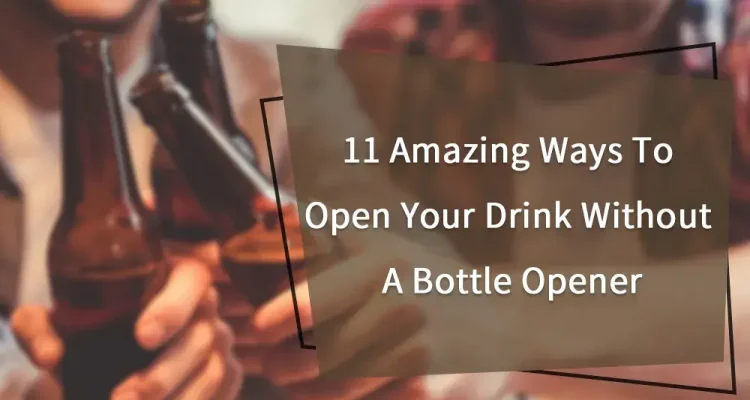You’ve probably struggled to open a bottle without a bottle opener before. Well, your struggles…
From Mash to Bottle: A Beginner’s Guide For Liquor Production
Liquor refers to distilled alcoholic beverages, typically containing 20-60% alcohol by volume. The most common types of liquor include spirits, whiskey, vodka, rum, tequila, and brandy.
Liquor gets its high alcohol content and concentrated flavor through the process of distillation, where a fermented liquid is heated until the alcohol evaporates and condenses at a higher proof. This separates the alcohol from the original fermented mash.
The liquor production process is a complex process that requires careful control from raw ingredients to finished products. This article will provide a comprehensive guide about the full cycle of liquor production from mash to bottle. We will look at the key steps and operations involved, including feedstock selection, milling, mashing, fermentation, distillation, aging, filtration, blending, and packaging.
Step1: Feedstock Selection
The first step in creating liquor is choosing appropriate feedstocks or raw ingredients.
The type of feedstock determines the basic flavour profile and properties of the final spirit. For whiskey production, feedstocks usually include cereal grains like barley, corn, rye, or wheat. For vodka, high-starch foods like potatoes or grains are common. Sugarcane juice and molasses are primary feedstocks for rum. Whatever the source, the feedstock provides sugars, starches, or juice that can be fermented into alcohol.
When selecting feedstocks, distillers evaluate several criteria. Flavour is critical, as compounds like tannins and oils will carry through distillation. Some grains like rye and barley have more complex, spicy flavors versus more neutral corn and wheat. Sugarcane brings vegetal, grassy notes while potatoes have an earthy profile. These innate flavors come through in the finished liquor.
Fermentability is also key – the feedstock must contain suitable carbohydrates that yeast can convert into alcohol. Starch-rich grains and tubers are highly fermentable, while sugary juice or molasses already contain fermentable sugars. Additionally, feedstock nutrients like nitrogen, phosphorus, and sulphur aid yeast growth during fermentation.
Feedstock availability and cost are practical considerations too. Distillers often source local crops that are economical and consistently available. This ensures stable ingredient supply for continued production. Environmental sustainability is another factor, as some feedstocks have a lower carbon footprint than others.
Lastly, regulations play a role in feedstock selection. Laws define approved ingredients for certain spirits like Scotch whisky (barley only) or Tennessee whiskey (corn dominant). Within these guidelines, distillers leverage feedstock combinations to create their distinct liquors.
Step2: Milling & Mashing
Once suitable feedstocks are sourced, the next phase in liquor production is milling and mashing. Milling refers to grinding grains like barley, rye, or corn to access their starch content. Dry grains are too large and dense for efficient extraction. Milling increases surface area which improves downstream processing.
The traditional milling method uses stone wheels to crush grains. Today, mechanical roller mills are more common. They shred and shear grains between rotating metal cylinders to reduce particle size. Milling also liberates starch granules from the protein matrix of the grain. This starch will get converted to fermentable sugars.
Mashing refers to the process of steeping milled grains in hot water to extract fermentable starch and sugars. Enzymes in the grain break down insoluble starch into soluble sugars. Adding hot water activates these enzymes, while adjusting temperature controls enzymatic activity.
A mash mixer blends milled grains with 140°F to 160°F water for 1 to 2 hours. This allows the starch conversion reactions catalysed by enzymes to occur. The resulting liquid is called the mash. Distillers may collect the soluble extract by filtering the mash. They can also proceed directly to fermentation using the entire mash.
For feedstocks like sugarcane, no milling or mashing is needed. The juice contains simple sugars like sucrose that yeast can directly ferment. However, grains must be milled and mashed to prepare the starch for fermentation. This process converts grain into a sugar-rich feedstock suitable for alcohol production.
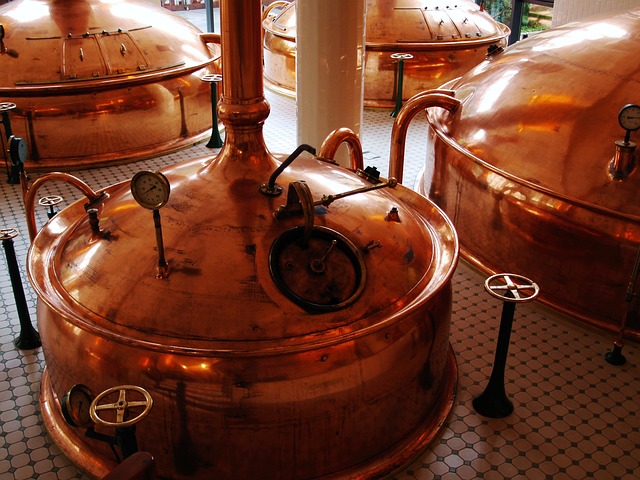
Step3: Fermentation
After feedstocks are properly prepared, fermentation converts the sugars to alcohol. Yeast metabolizes simple sugars like glucose and fructose, producing ethanol and carbon dioxide as byproducts. Distillers manage the fermentation environment to maximize sugar conversion and alcohol yield.
Yeast selection is important, as different strains have varying alcohol tolerance, temperature range, and byproduct formation. Most distillers use pure yeast cultures to ensure consistency. Specialty strains like sourdough may be used for unique flavour profiles.
The mash or juice feedstock is combined with water and yeast in fermentation tanks. Common types are stainless steel vats or wooden barrels. Tanks are sealed during primary fermentation which allows CO2 pressure to build. Distillers control temperature, adjusting from 75°F to 95°F as fermentation progresses. The elevated heat accelerates yeast activity and alcohol production.
Fermentation duration depends on target alcohol level. Primary fermentation typically runs 1-3 days from sugar to 10-12% alcohol by volume (ABV). For higher concentrations, repeated batches or continuous fermentation is used. This facilitates yeast adaptation, pushing ABV thresholds to 20% or greater.
During fermentation, distillers monitor progress through density and sugar measurements. Samples check residual sugar and confirm fermentation completion. Lab tests also verify alcohol content. Once sugar depletion slows or stops, fermentation is ended, and the wash is ready for distillation.
Proper fermentation setup and control is crucial for yield. Yeast health, temperature, and nutrients must be maintained to ensure full conversion of sugars to alcohol. The resulting wash contains the ethanol needed for effective distillation.
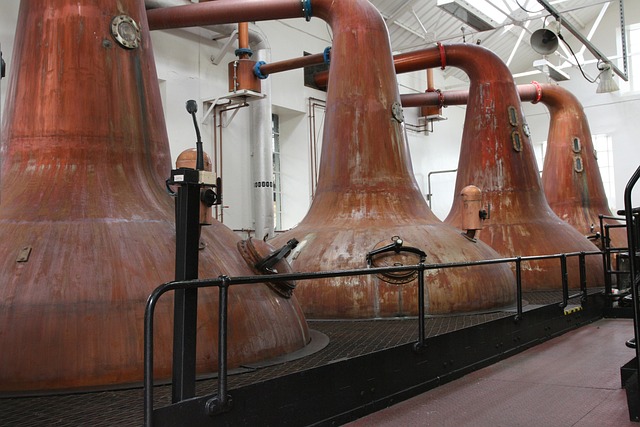
Step4: Distillation
Distillation is the signature process that concentrates alcohol in fermented wash to yield high-proof liquor. It works by exploiting ethanol’s lower boiling point compared to water. Heating causes ethanol to evaporate first, allowing targeted separation.
Wash is transferred to the distillation apparatus, traditionally a pot still or column still. Pot stills feature a large, heated container where wash is brought to a boil. Ethanol evaporates and travels to a connected pipe where vapours condense back to liquid form.
Column stills use fractional distillation for better separation. The wash flows into a tall, heated column. As ethanol boils off, it rises through stacked chambers. Condensation increases the ethanol purity in the upper stages where it can be isolated.
In either approach, distillers make targeted cuts during the run. The first fractions coming off, called heads, contain volatile undesirable compounds. The desirable center cut is redistilled to concentrate ethanol. The tails end fractions are low in alcohol. The head and tail portions get recycled back to the next run.
Multiple distillation rounds produce progressively higher alcohol content. Vodka may go through 10 rounds for 80-95% purity. Whiskeys distil to around 60-70% before aging and dilution. Each spirit has an optimal final ethanol proof.
The distiller’s expertise is crucial for quality. Making the right experience-based cuts and managing variables like temperature, pressure and run time determines the flavour, aroma, and mouthfeel of the final liquor. Careful distillation concentrates the heart of the ethanol to yield a smooth, palatable spirit.
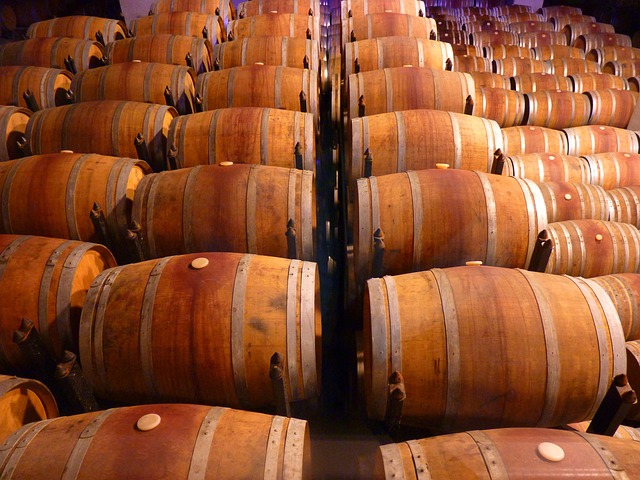
Step5: Aging
Unlike clear liquors like vodka and gin, many spirits require controlled aging in barrels to develop desired qualities. Whiskey, rum, tequila, and brandy interact with wood to extract flavour and color compounds. charring wood barrels exposes lignans that impart vanilla, caramel, and smoky notes. Tannins add structure while oxygenation through the barrel contributes smoothness.
Freshly distilled spirit is filled into barrels at high proof, typically over 100 proofs. Oak is the most common wood, with varieties like American white oak, French oak, and charred white oak. Toasting manipulates the wood’s impact – heavy toast imparts more aggressive tannins while lighter toast gives subtle spice. Bourbon law mandates new American white oak.
Environmental factors like humidity, temperature, and airflow control maturation. Cycles of expansion and contraction from seasonal changes pull spirits into and out of the wood, accelerating interaction. Warehouses may be situated to leverage local climate patterns. Bottled-in-bond whiskey requires aging in a federally bonded warehouse.
Duration ranges from 3 months for spiced rum to 20 years for fine Scotch or cognac. While aging mellows and integrates flavors, excessive time can negatively over-oak some spirits. Distillers sample barrels periodically to judge progression. Once mature, barrels are emptied and blended.
Aged liquors like whiskey exhibit complex flavors unachievable through just distillation. Master distillers leverage nuances of climate, oak varieties, and toast levels to impart signature aging characteristics. Their barrel programs are crucial for flavour development and brand differentiation. Proper maturation transforms raw distillate into refined liquor.
Step6: Filtration & Proofing
Before packaging, distilled spirits undergo final filtration and proofing. Filtration polishes the liquor by removing residual solids and particulates for clarity and shelf stability. Proofing dilutes with water to reach the desired alcohol percentage for bottling.
Filtration methods include membrane filtration, reverse osmosis, infusion, and charcoal processing. These remove impurities like proteins, lipids and esters while keeping intact ethanol and aromatic compounds. Vodka in particular undergoes extensive multi-stage filtration for its signature purity.
For bourbon and other aged spirits, used barrel staves are often recycled into a thin charcoal slurry that filters the liquor. This provides beneficial contact with charred oak immediately before bottling to balance flavors. It also imparts an attractive copper tone in the final product.
The filtered distillate then adjusts to a specified alcohol content through proofing with pure water. Vodka commonly proofs to 80 proof or 40% ABV. Whiskeys may be cut to 80 proof or more, while cask-strength varieties forgo proofing entirely. For liqueurs, the base spirit proofs down further as flavourings and sugar get added.
Blending may also occur before proofing to achieve a target flavour profile. Single malt scotch contains whiskey from one distillery, while blended scotch mixes malts for complexity. Premium brands allocate higher portions of older, rarer stocks to the blend.
Proofing requires accuracy – every brand has a proprietary formula specifying its alcohol content, proper dilution and sometimes trace minerals in the water. Following these guidelines ensures the finished liquor matches what consumers expect from the brand experience.
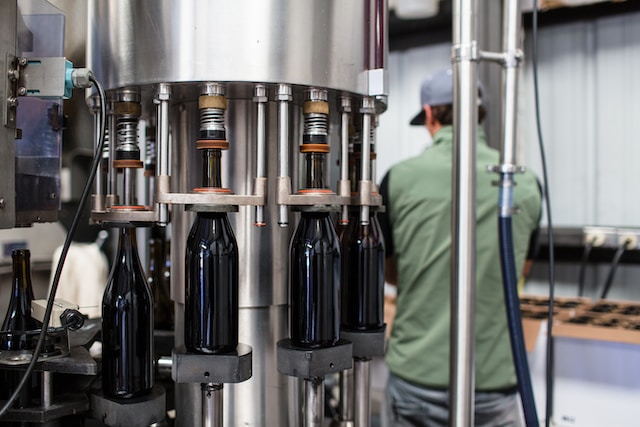
Step6: Bottling & Packaging
The final phase of liquor production is bottling and packaging. This must be executed with care to preserve quality and prevent contamination. Bottling runs follow strict protocols governing everything from equipment sterilization to bottle sealing.
The filling machines first clean and sanitize bottles with hot water or steam injection. Filling nozzle arrays then pump the liquor into bottles at a controlled speed. Modern lines fill over 1000 bottles per minute. Overflow bottles check fill accuracy. Capping equipment applies tamper-proof seals with identification codes traceable to the batch.
Filled bottles queue for labelling which precisely glues on wraparound paper or moulded acrylic labels. This iconic branding visually distinguishes the liquor and communicates critical information like brand, variety, age, and alcohol content. Further decoration like wax dipping or embossing enhances appeal.
Packaged bottles are case packed for distribution and shipping. Bottle orientation, spacing, and cushioning protects against breakage. Cases also orient bottles to best display labels and branding on store shelves. Some liquor gifts box individual bottles with accessories in decorative packaging.
At every step, quality control examines random samples checking for defects and adherence to specifications. Bottles undergo visual inspection for flaws, fill level, label accuracy and other attributes. Liquor samples test alcohol content, clarity, and taste versus benchmarks. Only products passing all inspections gets approved for release.
Advanced automation continues improving packaging efficiency and reliability. But distilleries still rely extensively on human supervision, especially for monitoring quality. The responsibility for flawless execution extends through bottling to uphold the brand promise set by the preceding steps.
Conclusion
The full liquor production process represents a diverse range of agricultural, biochemical, physical, and engineering disciplines seamlessly integrated. Distillers begin with raw agricultural materials like grains, fruits, and sugarcane. Through milling, mashing, and fermentation, they unlock fermentable sugars that get converted to alcohol.
Distillation concentrates the ethanol through heat and physics for purification. Barrel aging leverages biology, chemistry, and environmental science for maturation. Final filtration and proofing refine the liquor prior to meticulous bottling procedures. At each stage, data, analytics, and sensory science guide quality control.
Generations of expertise have refined this process which balances tradition with modern efficiencies. Today’s distilleries employ extensive automation, instrumentation, and computational platforms. But the human touch remains essential – the master distiller’s skill and sensory perception is impossible to replicate. Their vision and attention translate raw ingredients into exceptional spirits.
Regulatory bodies like the TTB closely govern the process to ensure safety and consistency for consumers. Truth-in-labelling laws mandate transparency on liquor contents and origins. Despite industrial scale, brewers must follow established techniques if marketing products under protected designations like Irish whiskey or Cognac.
From growing original feedstocks through managing aging warehouses to blending and packaging, spirit makers leverage science as well as art. Their interconnected, well-honed steps deliver nuanced liquors exhibiting distinctive terroir and craftsmanship. understanding this comprehensive journey from mash to bottle provides enlightened insight to fully appreciate distillers’ achievements. The next time you sip a glass of fine whiskey or spirit, recognize the tremendous effort behind that simple pleasure.

